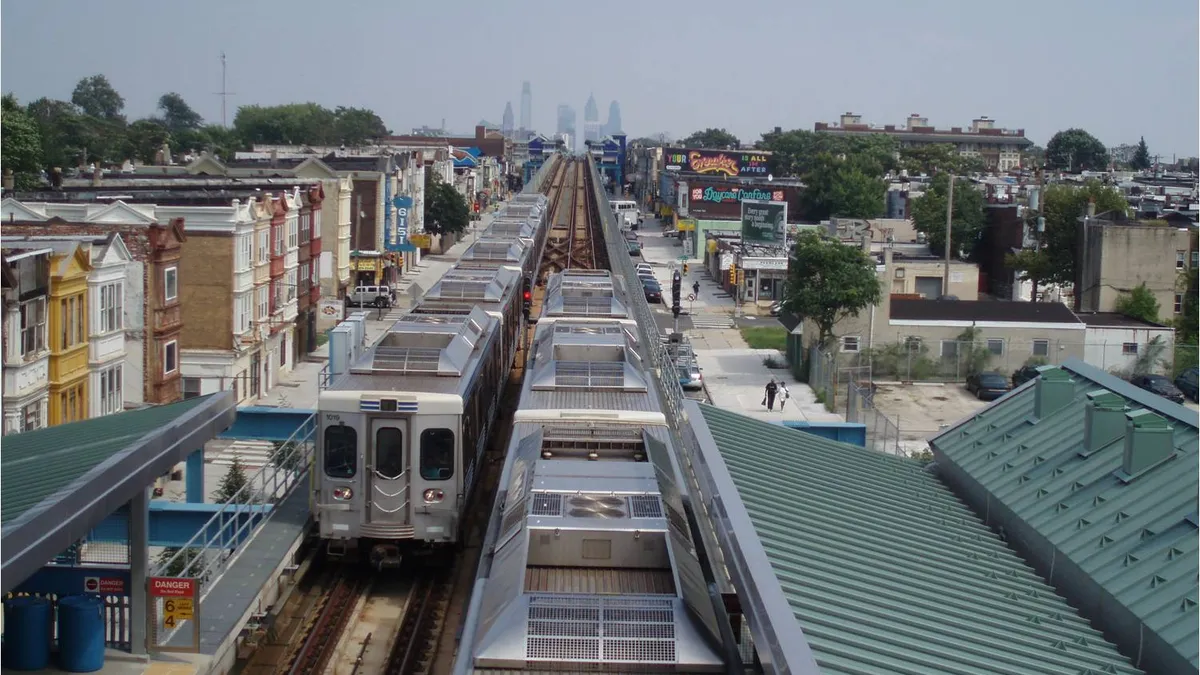Dive Brief:
- Philadelphia has released its first strategic transportation plan, Connect, which will guide transportation priorities and investments over the next seven years. The plan aims to provide residents a safe, affordable, accessible and reliable transportation system.
- The plan outlines a number of goals and actions, including revamping bus service, expanding bike-share, addressing traffic congestion, creating neighborhood slow zones, ensuring a walkable city and managing parking and curbside space.
- An underlying theme throughout the plan is fostering equity and making sure that people in all neighborhoods experience benefits from the transportation system and the access to opportunities that it provides.
Dive Insight:
Connect is intended to complement, but not take the place of, the city's Vision Zero plan and recently released overall comprehensive plan, Philadelphia2035. Connect states that transportation infrastructure and service improvements are needed because a transportation system greatly affects residents' quality of life and access to jobs and other opportunities, and a poorly operating system leads to resident isolation and decreased economic growth in addition to pollution and various health issues.
The plan notes connections between different aspects of the city's transportation system rather than addressing them in silos. For example, bus ridership is dropping, which could affect the number of people driving and thus spur traffic congestion. The report recognizes that many people rely on cars for transportation and instead of simply pushing to eliminate that factor to tackle environmental goals, the plan says personal vehicle use "should be supported in a way that respects everyone else who uses the street," including transit users, cyclists and pedestrians.
The plan admits that Philadelphia's current transportation system has a significant level of racial inequity and must be purposefully fixed. For example, 33% of people in Philadelphia do not own a car, which is much higher than the national average of 9.25%. People of color disproportionately do not own cars, with 42.3% of Philadelphia's black population and 36% of the Latino population fall into that category, compared with 23.5% of the white population. About 28% of residents get to work on public transit, and they tend to be lower income and more people of color compared with the city's overall demographics.
The numbers would suggest that other mobility options should be stronger and more accessible in neighborhoods with low rates of car ownership, but that is not necessarily the case. "Generational poverty and a long history of structural racism have a large effect on how Philadelphia’s transportation system meets the needs of residents, or in some cases, does not meet their needs," the plan says.
Connect also puts a large emphasis on safety, suggesting that it's Philadelphia's most significant transportation problem. Of comparably sized and resourced cities, Philadelphia has the nation's second-most traffic deaths per capita, behind Los Angeles. The plan prioritizes safety improvements such as traffic calming, speed reductions and creating protected bike lanes to reduce the amount of deaths and injuries from traffic accidents.












